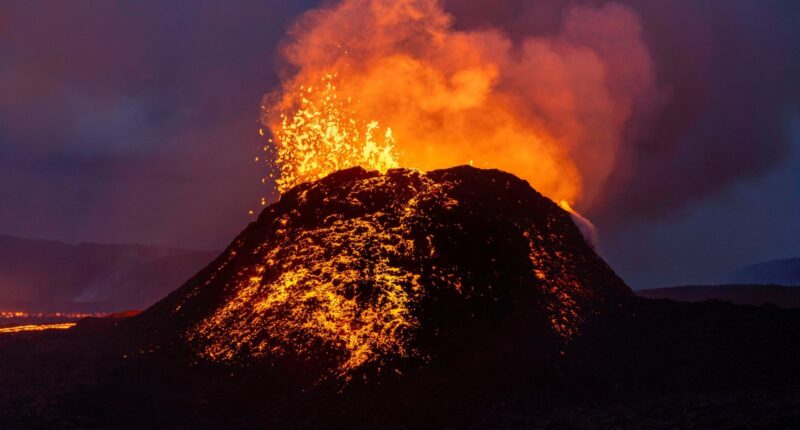A HUGE volcano is on the brink of erupting with locals and holidaymakers being forced to evacuate after a red alert was issued.
Magma of extreme temperatures has started to flow from beneath Iceland’s Sunddhnúksgígar volcano this morning, as experts indicate seismic activity is currently in progress.


Efforts are already taking place to evacuate Grindavík residents with 40 homes now completely cleared out, national broadcaster RUV said.
The five-star Blue Lagoon hotel in the city was one of those quickly evacuated in the early hours of the morning.
Guests were rushed to other hotels as the first concerning signs of magma were felt.
Hotel manager Helga Árnadóttir said she had to quickly wake up holidaymakers and lead the panicked evacuations.
The first red alert for the region was sounded just before 6am local time by the West Coast Weather Bureau.
As per the Icelandic Meteorological Office, pressure measurements in boreholes near the volcano reflect significant alterations, indicating a probable eruption.
They released a statement today saying: “Warning: A magma eruption has begun.
“No magma has reached the surface as of now, but an eruption is likely to occur.”
Reports of a potential volcanic flare up were first noted last week when the met office announced a strong possibility of a disaster.
A statement on March 25, said magma had now built up to such a point at the Sundhnúkur crater that a spate of surges were “likely” to emerge.
The statement mentioned, “The prevailing assumption is that this accumulation of magma will culminate in a magma intrusion and/or an eruption, expected to manifest first in the region between Sundhnúkur and Stóra-Skógfell.”
The volcano sits 20 miles south-west of Reykjavik and has erupted ten times in just three years.
In 2024 alone, it spewed molten lava on seven different occasions and caused havoc for the local villages.
These repeated volcanic eruptions close to Grindavk – a town of 3,800 people – often severely damages homes with many residents forced to relocate for weeks on end.
Iceland, with nearly 400,000 citizens, is located on the fault line between the Eurasian and North American tectonic plates.
It makes it a seismic hotspot with hot and warm-water springs and dozens of volcanoes.
The biggest eruption in recent years was the Eyjafjallajokull volcano in 2010 – which spewed huge clouds of ash into the sky and disrupted air travel for months.


















